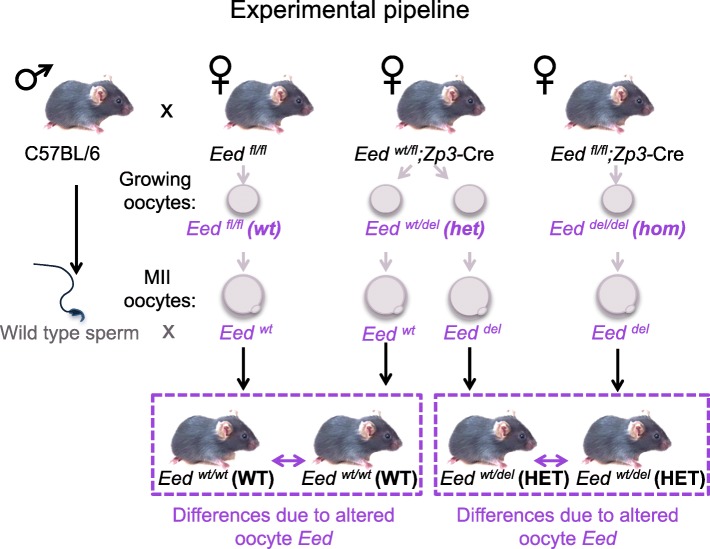Fig. 2.
Schematic of experimental breeding to determine epigenetic differences in isogenic offspring from Eed floxed females: Wild type males were mated with Eedfl/fl, Eedfl/del;Zp3-Cre and Eedfl/del;Zp3Cre female mice that produce Eeddel or Eedwt haploid oocytes derived from Eedfl/fl (wild type; wt), Eedwt/del(heterozygous; het) or Eeddel/del (homozygous; hom) growing oocytes. Het oocytes grow and mature in the presence of functional EED, while hom oocytes grow and mature in the absence of EED function. Production of offspring by mating Eedfl/del;Zp3-Cre and Eedfl/del;Zp3Cre female mice with isogenic wild type males allowed the comparison of isogenic HET offspring from het and hom oocytes. As the resulting HET offspring were isogenic and carry identical heterozygous Eed deletion, differences detected could be ascribed to loss of epigenetic regulation by EED in the oocyte and before cavitation of paternal Eed in the preimplantation embryo. Similar comparisons were made between WT offspring produced from Eedfl/fl and Eedfl/del;Zp3-Cre females. Comparison of WT and HET offspring produced by Eedfl/fl and Eedfl/del;Zp3-Cre females provides an internal control identifying the contribution of Eed heterozygosity to the phenotype. Genetically identical offspring are shown in purple dashed box

